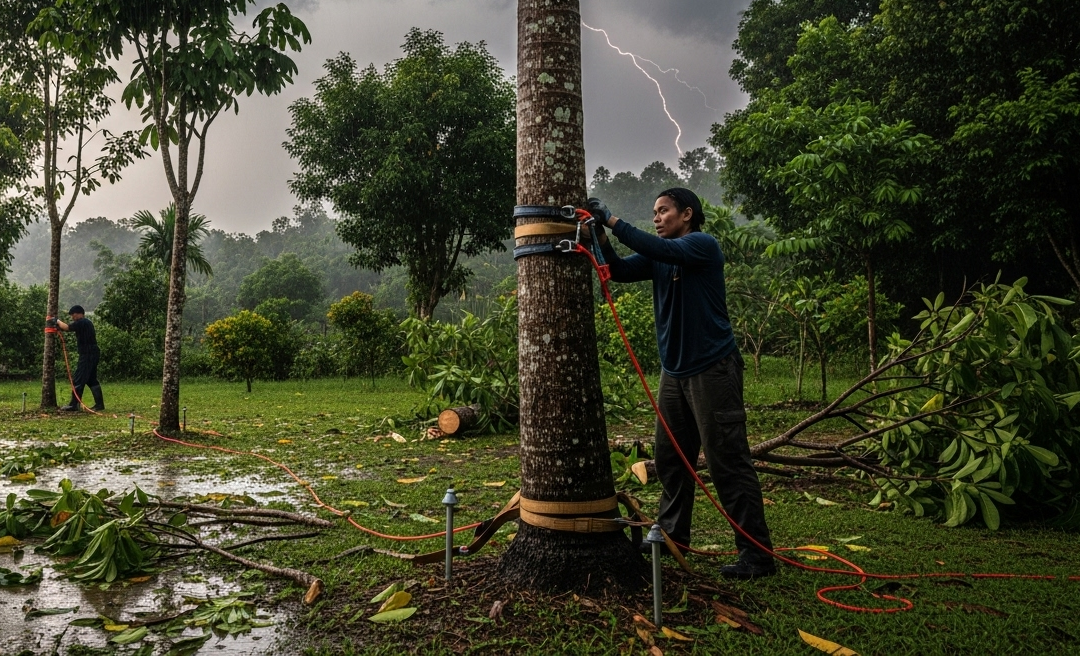Trees are magnificent assets; however, they can pose considerable risks during extreme weather conditions. Considering Malaysia’s intense rainfall and powerful winds, it is essential to prepare your trees for the storm season as part of property upkeep. This proactive strategy not only safeguards your investment but, more importantly, ensures the safety of your home and family.
1. Pre-Storm Risk Assessment: The Proactive Trim
The most effective method to avert storm damage is through preventative trimming. Strong winds tend to target the most vulnerable areas of a tree.
- Identify Deadwood: Branches that are dead, diseased, or severely damaged are the first to break off during a storm. It is advisable to remove these well in advance of the rainy season.
- Thinning the Crown: Trees with excessively dense crowns behave like sails, capturing more wind and heightening the risk of uprooting or splitting. Selective thinning enables wind to flow through the canopy, thereby significantly alleviating stress on the main trunk and roots.
- Look for Structural Defects: Examine for V-shaped crotches (where branches meet the trunk) as these are typically weaker than U-shaped ones. Additionally, be on the lookout for signs of decay, large cracks, or leaning—these are indicators that the tree poses a significant storm risk.
2. Inspecting the Foundation: Root and Soil Health
A tree’s ability to withstand wind starts with its roots.
- Compromised Roots: The construction process, heavy machinery usage, or even the accumulation of excessive soil over the base can adversely affect a tree’s root system, leading to instability.
- Wet Soil Hazard: The saturated soil conditions in Malaysia offer reduced support for tree roots. A robust and well-cared-for root system serves as the sole protection against this issue. If a tree is already leaning, the saturated soil significantly heightens the risk of complete uprooting.
3. Post-Storm Action: When Disaster Strikes
If a storm passes, your work isn’t done.
- Immediate Safety First: Always refrain from approaching a fallen tree or large branch that is in contact with a power line. Assume that any wires are energized and promptly reach out to Tenaga Nasional Berhad (TNB) as well as a qualified tree cutting service.
- Professional Assessment: Following a major storm, it is essential to have a certified arborist or a professional tree service evaluate your property. They are capable of identifying concealed damage, such as internal splits or stressed limbs, that you may overlook.
- Quick Clean-up: The swift removal of fallen debris helps to avert additional hazards and prevents pests from infesting the decaying wood.
Conclusion
Do not postpone until a monsoon is predicted. By taking proactive measures to evaluate and care for your trees at this moment, you are making an essential investment in the safety of your property. If you have any worries regarding the health or stability of your trees, particularly those situated near your home or building, please contact us for a professional risk assessment today.

